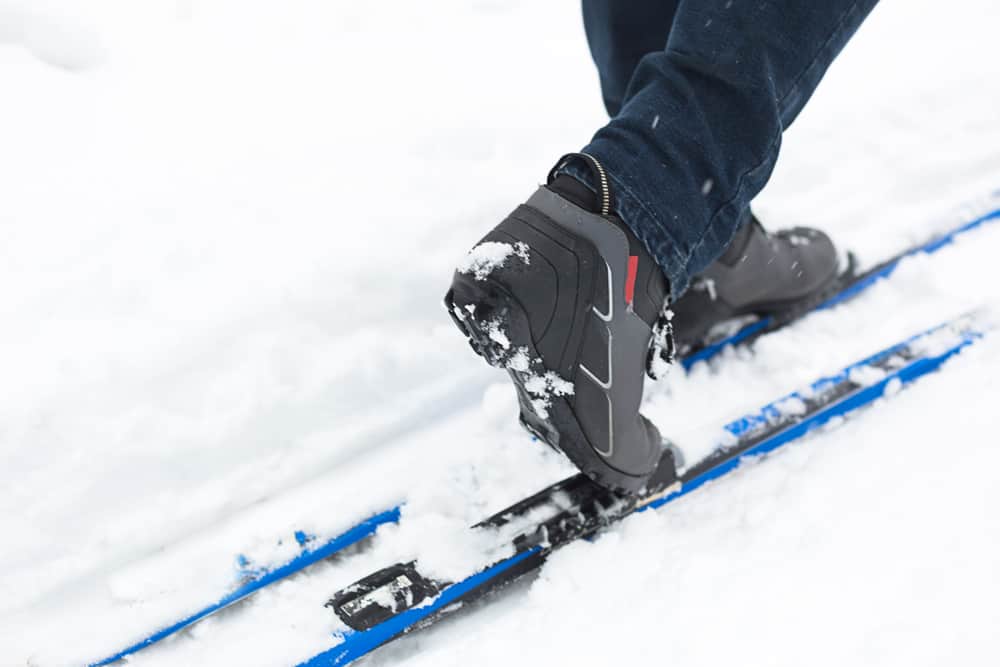Table of Contents
Cross-country skiing, a fusion of athleticism and nature, hinges on durable equipment. The lifespan of your cross-country skis directly impacts your skiing experience, influenced by quality, care, and maintenance. From leisure to competition, let’s explore the facets shaping their longevity.
How Long Do Cross-Country Skis Last?
The lifespan of cross-country skis varies based on usage, quality, and care. High-quality skis, with proper maintenance and occasional base treatments, can last 500–1000 hours of use. Hobbyists can maintain skis for 10+ years. Current race skis endure 3-5 years with moderate use or 2-3 seasons under heavy use.

What Affects the Lifespan of a Ski?
The lifespan of cross-country skis isn’t set in stone. Rather, it’s influenced by a multitude of factors that work together to determine how long your skis will serve you well.
1. Quality Matters
The initial quality of your skis plays a pivotal role in their lifespan. Higher-quality skis are often constructed with premium materials and precise craftsmanship, which can translate to enhanced durability. Investing in a well-crafted pair of skis can provide you with many more years of enjoyable skiing experiences.
2. Care: A Defining Factor
The amount of care you dedicate to your skis profoundly affects their longevity. Regular maintenance and thoughtful practices can extend the life of your skis, ensuring they remain responsive and enjoyable.
3. Waxing Rituals
Waxing isn’t just about enhancing glide; it’s also a crucial aspect of maintaining your skis’ health. Regularly waxing your skis throughout the ski season forms a protective layer that shields the base from abrasive snow and ice. Proper waxing prevents unnecessary wear and tear, contributing to prolonged ski life.
4. Summer Storage Wax
When the snow melts and skiing is a distant memory, don’t underestimate the power of summer storage waxing. Applying a coat of storage wax before stowing your skis for the off-season prevents the bases from drying out and maintains their structural integrity. This extra step can ensure your skis are ready to hit the trails with gusto when winter returns.
When is it Time to Replace the XC Skis?
While quality and maintenance can extend the lifespan of your skis, there comes a point when replacing them is the best course of action. Here are some signs to watch out for:
1. Performance Deterioration
As skis age, their performance may start to decline. You might notice decreased responsiveness, reduced glide, or less precise control. If your skis no longer deliver the skiing experience you’re accustomed to, it could be a sign that they’re nearing the end of their lifespan.
2. Base Damage
Inspect your skis regularly for base damage, such as deep scratches, gouges, or delamination. Significant damage can compromise your skis’ structural integrity and performance. While minor scratches are common and can often be repaired, extensive damage may indicate that replacement is more practical.
3. Wear and Tear
Examine the overall condition of your skis, paying attention to signs of wear and tear on the edges, bindings, and bindings’ mounting points. If these elements show excessive wear that can’t be easily rectified, it might be time to consider new skis.
4. Technological Advances
Advancements in ski technology occur regularly. Newer skis might incorporate innovative materials, designs, and features that can enhance your skiing experience. If you’re skiing on older models, upgrading to newer skis could provide you with improved performance and enjoyment on the trails.
Conclusion
In the realm of cross-country skiing, a blend of quality, maintenance, and timely replacement dictates the lifespan of your skis. As you glide through snowy landscapes, remember that well-crafted skis, meticulous care, and awareness of when to replace your trusty pair collectively enhance your skiing journey.


